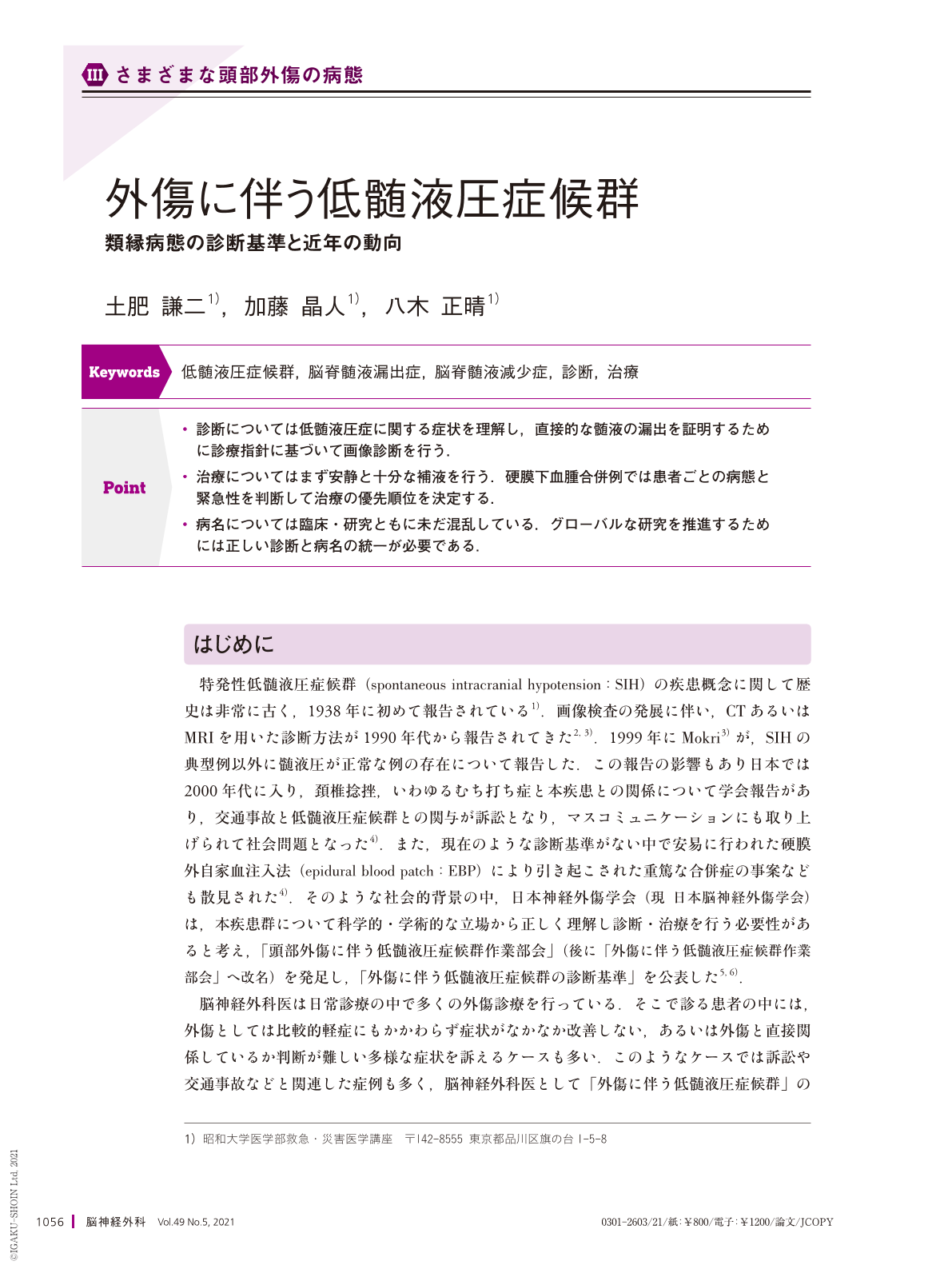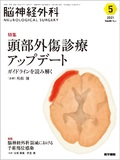Japanese
English
- 有料閲覧
- Abstract 文献概要
- 1ページ目 Look Inside
- 参考文献 Reference
Point
・診断については低髄液圧症に関する症状を理解し,直接的な髄液の漏出を証明するために診療指針に基づいて画像診断を行う.
・治療についてはまず安静と十分な補液を行う.硬膜下血腫合併例では患者ごとの病態と緊急性を判断して治療の優先順位を決定する.
・病名については臨床・研究ともに未だ混乱している.グローバルな研究を推進するためには正しい診断と病名の統一が必要である.
Since the 2000s, “intracranial hypotension syndrome associated with trauma” has become a social problem in relation to litigation and compensation issues in Japan. To address this problem, guidelines for correct diagnosis have been developed. The basic pathogenesis of this disease is cerebrospinal fluid leakage caused by fragile tissue injury due to trauma. In order to improve the treatment outcome of this disease, it is important to prove the CSF leakage directly, using diagnostic imaging based on the guidelines, rather than diagnosing it based on clinical manifestations alone. For management, an epidural blood patch(EBP)should be used only after careful consideration. As such, rest and adequate fluid replacement should generally be given first. However, in cases with concomitant subdural hematoma, the order of hematoma irrigation and EBP should be determined according to the condition and urgency of each patient. In addition, it is necessary to standardize the formal name of this condition in papers to ensure rigorous academic discussion.

Copyright © 2021, Igaku-Shoin Ltd. All rights reserved.


